 Shin splints, those nagging pains along the front or inner part of your lower leg, are a common issue for runners, especially when ramping up mileage. Whether you're training for a race or simply increasing your weekly distance, ignoring the early warning signs can lead to prolonged discomfort or even more serious injuries. The good news? With the right approach, you can prevent shin splints or recover quickly if they do arise.
Shin splints, those nagging pains along the front or inner part of your lower leg, are a common issue for runners, especially when ramping up mileage. Whether you're training for a race or simply increasing your weekly distance, ignoring the early warning signs can lead to prolonged discomfort or even more serious injuries. The good news? With the right approach, you can prevent shin splints or recover quickly if they do arise.
Here’s what you need to know about managing and avoiding shin splints while increasing your mileage.
Choose the Right Running Shoes
Wearing the wrong shoes is one of the biggest contributors to shin splints. Running in worn-out shoes or those that don’t match your foot mechanics can place excessive stress on your lower legs. Here’s how to make sure your shoes are working for you, not against you:
- Get fitted at a running store. A proper gait analysis can help determine if you need neutral, stability, or motion-control shoes. Athletic Annex is a great choice!
- Replace shoes regularly. Most running shoes last between 300 and 500 miles. Running in shoes past their prime can reduce shock absorption and increase strain on your shins.
- Consider orthotics if needed. If you have flat feet or excessive pronation, custom or over-the-counter orthotics can provide extra support.
Prioritize Rest & Recovery
Increasing mileage too quickly is a recipe for shin splints. Your body needs time to adapt to the added stress.
- Follow the 10 percent rule. Increase your weekly mileage by no more than 10 percent to give your muscles, bones, and connective tissues time to adjust.
- Incorporate rest days. Running every day without recovery can overload your shins. Make sure to schedule rest or cross-training days to reduce impact.
- Listen to your body. If you start feeling shin pain, don’t push through it. Cutting back mileage and allowing time for recovery can prevent a minor issue from becoming a serious injury.
Stretch & Roll to Improve Mobility
Tight calves, stiff ankles, and poor mobility can all contribute to shin splints. Keeping your lower legs flexible and strong can help distribute stress more evenly and prevent excessive strain.
Essential Stretches & Mobility Drills:
- Calf Stretch. Stand facing a wall, place one foot behind you, and press your heel into the ground to stretch the calf. Hold for 30 seconds per side.
- Toe Raises. Strengthen the muscles around your shins by lifting your toes while keeping your heels on the ground. Do two to three sets of 15 reps.
- Ankle Circles. Rotate your ankles in both directions to improve mobility. Perform 10 circles each way.
- Foam Rolling. Use a foam roller or massage stick on your calves and shins to reduce tightness and improve blood flow.
Shin splints can be frustrating, but they don’t have to derail your training. By wearing the right shoes, managing your mileage wisely, and prioritizing recovery, stretching, and mobility work, you can keep your shins healthy as you build endurance. If shin pain persists despite these efforts, it may be time to consult a physical therapist to address any underlying imbalances or biomechanical issues.
Train smart, listen to your body, and keep running strong!

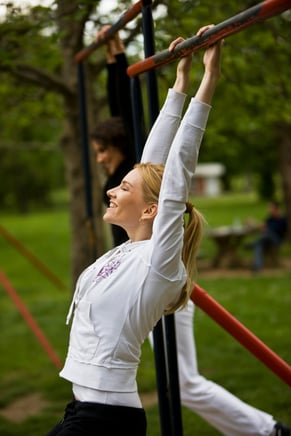 How many times have you looked around a room full of people and seen nearly everyone buried in their phones? Their shoulders are slumped forward and their head is hung low. Or maybe you’re at work, and everyone’s busy composing emails with that same forward head position? Chances are, it won’t be long before you notice this posture elsewhere, and it can wreak havoc when it comes to the health of your shoulders.
How many times have you looked around a room full of people and seen nearly everyone buried in their phones? Their shoulders are slumped forward and their head is hung low. Or maybe you’re at work, and everyone’s busy composing emails with that same forward head position? Chances are, it won’t be long before you notice this posture elsewhere, and it can wreak havoc when it comes to the health of your shoulders.
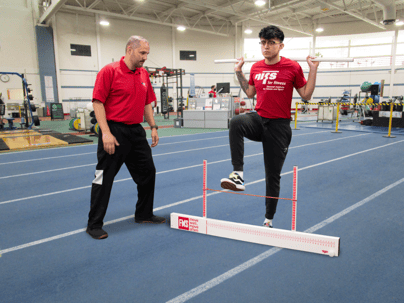

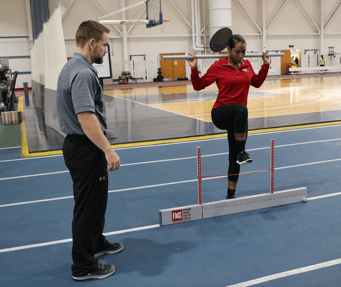
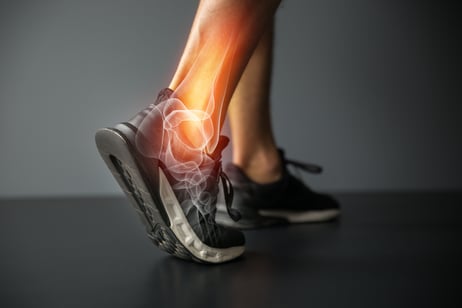 Whether you are a seasoned workout veteran or the new face in the gym, there’s no denying that lower-leg pain can be a huge deterrent for exercise (and day-to-day life, for that matter). Some pains are dictated by the range of motion in the ankle. Due to several factors including previous injuries and wear and tear, physiological problems from the various shoes people wear, and the types of exercises people punish their bodies with, we see individuals every day who have a hard time performing some of the more basic exercises such as squats and deadlifting.
Whether you are a seasoned workout veteran or the new face in the gym, there’s no denying that lower-leg pain can be a huge deterrent for exercise (and day-to-day life, for that matter). Some pains are dictated by the range of motion in the ankle. Due to several factors including previous injuries and wear and tear, physiological problems from the various shoes people wear, and the types of exercises people punish their bodies with, we see individuals every day who have a hard time performing some of the more basic exercises such as squats and deadlifting.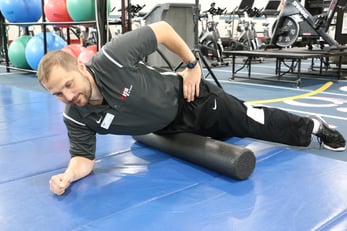 Most workout formulas include a warmup process. If hip mobility is a focus, your workout would benefit from a few additions to the routine. Foam rolling, which has been around for a while, is a great way to get blood circulating to the muscles and decrease soreness (if you worked them out prior). Spending a few minutes to roll out the trigger spots (areas of higher tenderness) will help you feel better, and you will be able to exercise on a more consistent basis.
Most workout formulas include a warmup process. If hip mobility is a focus, your workout would benefit from a few additions to the routine. Foam rolling, which has been around for a while, is a great way to get blood circulating to the muscles and decrease soreness (if you worked them out prior). Spending a few minutes to roll out the trigger spots (areas of higher tenderness) will help you feel better, and you will be able to exercise on a more consistent basis.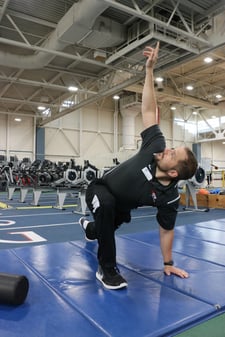 Second, I would suggest a dynamic movement stretch (rather than traditional static stretching) to help not only stretch the muscle, but also warm up the body for more movement. “The
Second, I would suggest a dynamic movement stretch (rather than traditional static stretching) to help not only stretch the muscle, but also warm up the body for more movement. “The 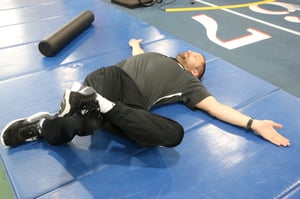 Finally, another great stretch to do is simply called a
Finally, another great stretch to do is simply called a 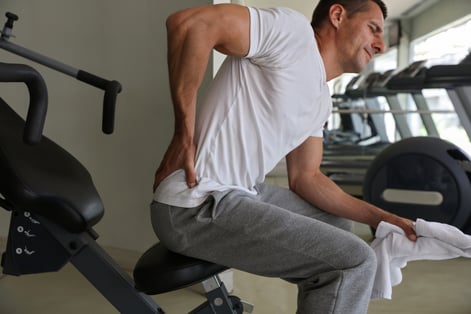 How many people do you know who suffer from a form of back pain? I’d be willing to wager it’s at least one person, and perhaps that person is you. The prevalence of nonspecific lower-back pain alone is estimated at
How many people do you know who suffer from a form of back pain? I’d be willing to wager it’s at least one person, and perhaps that person is you. The prevalence of nonspecific lower-back pain alone is estimated at  How many times have you had every intention of heading to the gym either before or after work, only to be deterred by nagging back pain? Maybe you woke up feeling stiff and sore, or maybe you had a long day at work and had a flare-up of pain. Either way, you’re far less motivated to be active when in pain, which quickly turns into a slippery slope. Pain is often a signal that something is not right, and your body will likely encourage behaviors that relieve your pain or prevent it from worsening. If your pain increases with movement, the likelihood of you working out becomes very low. The less you move, the better you feel, and voila, your back pain “magically” goes away!
How many times have you had every intention of heading to the gym either before or after work, only to be deterred by nagging back pain? Maybe you woke up feeling stiff and sore, or maybe you had a long day at work and had a flare-up of pain. Either way, you’re far less motivated to be active when in pain, which quickly turns into a slippery slope. Pain is often a signal that something is not right, and your body will likely encourage behaviors that relieve your pain or prevent it from worsening. If your pain increases with movement, the likelihood of you working out becomes very low. The less you move, the better you feel, and voila, your back pain “magically” goes away!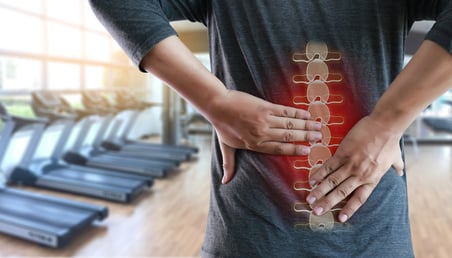 With millions of people around the world suffering from back pain, is there any hope for relief outside of traditional methods? Low back pain can be excruciating and immobilizing, but there is still hope. When dealing with any pain or injury, exercising might be the last thing that crosses your mind, especially if it’s chronic low back pain (CLBP). However, that’s exactly what is recommended and what can help.
With millions of people around the world suffering from back pain, is there any hope for relief outside of traditional methods? Low back pain can be excruciating and immobilizing, but there is still hope. When dealing with any pain or injury, exercising might be the last thing that crosses your mind, especially if it’s chronic low back pain (CLBP). However, that’s exactly what is recommended and what can help.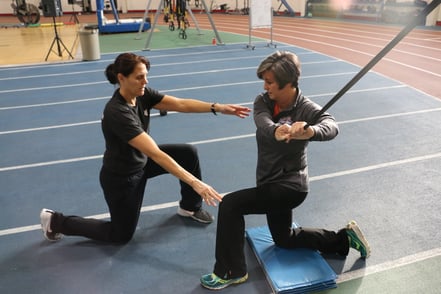 Coaching cues can really make a big difference in the outcome of your workouts. Sometimes it means the difference in whether you get injured during an exercise. Or are you even working the muscles you originally intended to use? Without cues, it would be foolish to have a client jeopardize their health because they saw someone else do a movement incorrectly or think they read it in a magazine or online. This is not to say that there are not many ways one can do to their exercises, or modifications to spice up their workout plan, but you need to make sure you aren’t compromising yourself and goals in the process.
Coaching cues can really make a big difference in the outcome of your workouts. Sometimes it means the difference in whether you get injured during an exercise. Or are you even working the muscles you originally intended to use? Without cues, it would be foolish to have a client jeopardize their health because they saw someone else do a movement incorrectly or think they read it in a magazine or online. This is not to say that there are not many ways one can do to their exercises, or modifications to spice up their workout plan, but you need to make sure you aren’t compromising yourself and goals in the process.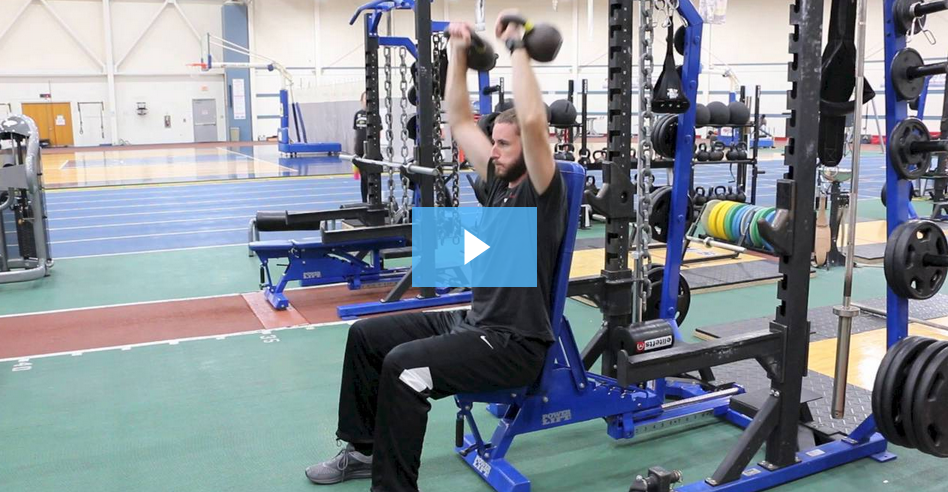
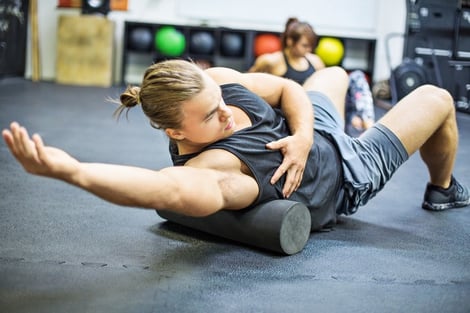 For the majority of my athletic and fitness career, getting sore from activities, workouts, practices, or games has not only been a sign that work has been done, but also a rite of passage. The saying, “no pain, no gain” came about as a result, and the world would judge successful workouts on soreness.
For the majority of my athletic and fitness career, getting sore from activities, workouts, practices, or games has not only been a sign that work has been done, but also a rite of passage. The saying, “no pain, no gain” came about as a result, and the world would judge successful workouts on soreness.